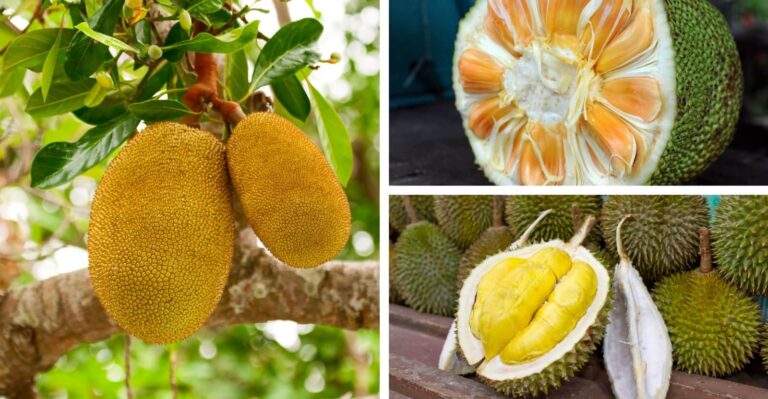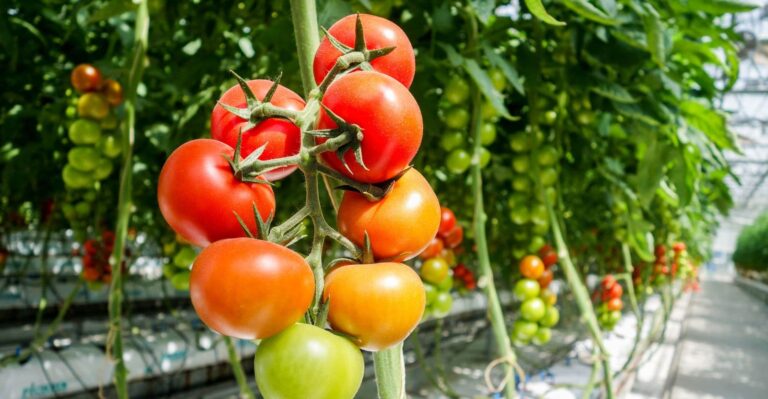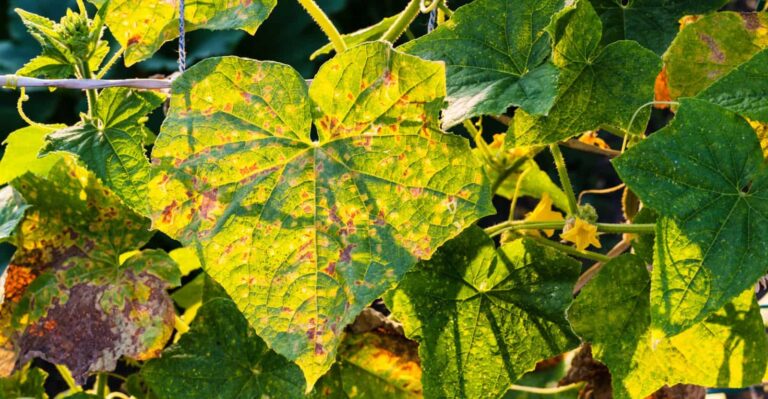Amazon has put together some great Home Gift Deals – save money and get your shopping done at the comfort of your home! Click here to see deals on Amazon
Lettuce is a prevalent ingredient in summer salads. You can comfortably grow it in a small garden space in summer. It’s one of the most rewarding parts of vegetable gardening.
Lettuce is a quick grower. When you pick it fresh from the garden, they beat the salads’ quality from the supermarket.
Due to the increased popularity of healthy eating and organic gardening using potting soils, there are different flavors, colors, and lettuce textures to grow.
In this article, we explain in-depth the best lettuces that you can grow in your garden.
All about Lettuce
Lettuce is ideally suited to grow in mild climatic conditions. You can plant it in an outdoor garden or raised garden beds where they fast grow from April to October.
Lettuce thrives in both moist and warm sunny weather. Fortunately, caring for lettuce is easy. It has only one notable pest, the redoubtable slugs. These slugs can infect lettuce with avoidable mildew of the leaves.
What are the best varieties of lettuce?
There are different varieties of lettuce available in the market. However, there are five main groups of lettuce that are popular among growers.
- Butterhead lettuce: These have soft, round, and floppy buttery leaves. The well-rounded heart-shape leaves give it a distinctive texture. These are usually pale green or yellow, and they overwinter better than most other lettuce varieties. (Buy Butterhead Seed)
- Cos Lettuce: This lettuce variety has tall, thicker leaves and has a dark green color. It’s grown in a warmer climate. (Buy Organic Cos Lettuce Seed)
- Batavian Lettuce: Batavian Lettuce has thick, crunchy leaves with different colors in it. You can allow it to fully mature, and it becomes pale and crisp. You can also grow it as leaf lettuce. (Buy Batavia Seed)
- Iceberg lettuce: These have light green hearts of smooth, watery leaves. Growing these require some extra care as they’re susceptible to tip burn. (Buy Iceberg Lettuce Seed)
- Leaf lettuce: This is the most popular variety, and you can pick it as a larger, outer leaf. They grow over a long season of up to 12 weeks. You can also cut as a baby leaves while they’re growing and use it in salad greens decorations. After the leaves are fully grown, they make a large mass of small leaves at their center. These come in many shapes, flavors, and colors. (Buy Seed)
How to grow leaf lettuce successfully?
For salad lovers, leaf lettuce growing is the preferred choice. The biggest reason is its smooth flavor and comfortable growing conditions.
If you want a consistent lettuce supply for salad through late spring, summer, and autumn, you should grow this. Here are some popular lettuce varieties and their growing conditions.
| Variety | Character | Sow | Spacing (cm) | Harvest | Note |
|---|---|---|---|---|---|
| Bergamo | Bright Green | Mar – Aug | Min 20 x 20 | May-Oct | High-quality texture |
| Bijou, Rosemoor | Dark Red | Mar-Aug | Min 20 × 20 | May-Sept | Delicious, slug-resistant |
| Maravilla de Verano | Hardy | Feb-Sept | Min 20 × 20 | May-Oct | For leaves, slug-resistant |
Where should you plant lettuce?
Lettuce is easy to grow and maintain. It’s not too picky about soil as long as it can retain moisture, preventing it from drying out. Moreover, lettuce doesn’t like hot weather, so you should choose a partial shade if you’re planting in summer.
Another factor to consider is crop rotation. Don’t plant lettuce where you’ve grown them in the last two years.
When should you plant lettuce?
It would be best if you sowed lettuce seed directly into the ground. You should do it when the soil has warmed up in the spring.
But you shouldn’t sow them all at once. For the best growing conditions, you should show a handful every couple of weeks. This allows you to have a continuous crop that will last you throughout the whole season.
Sowing
You can grow lettuce by using seeds. You should choose healthy-looking seeds from reputable vendors to produce the best quality lettuce.
Be aware that lettuce seeds are small, and indoor sowings grow best if covered with little or even no compost at all. If you’re growing in a greenhouse, sow it in seeds trays. You can plant lettuce seeds on the surface of well-wetted compost but don’t cover it.
You can place a glass sheet over the tray until it starts shooting tiny green leaves. If you’re planting it outdoors, maintain proper spacing, and sow about ten seeds per 5 cm.
Note:
You can keep the newly sown seed tray in the shade for the best results until small leaves are visible after three or four days.
When you’re planting it outdoors, you can choose after three weeks to crop the plants for baby leaves or space them out more for lettuce heart to develop. You can also leave a couple of plants for long-term use and look after them more carefully.
These long-term use lettuce plants can provide a consistent supply of leaves for a family over at least two months. You can dig a hole around 9 to 10 inches apart and place each plant firmly in it. Spread the soil above to cover the top of its root system.
You can give a little water to each so that its roots are moistened and help contact the soil.
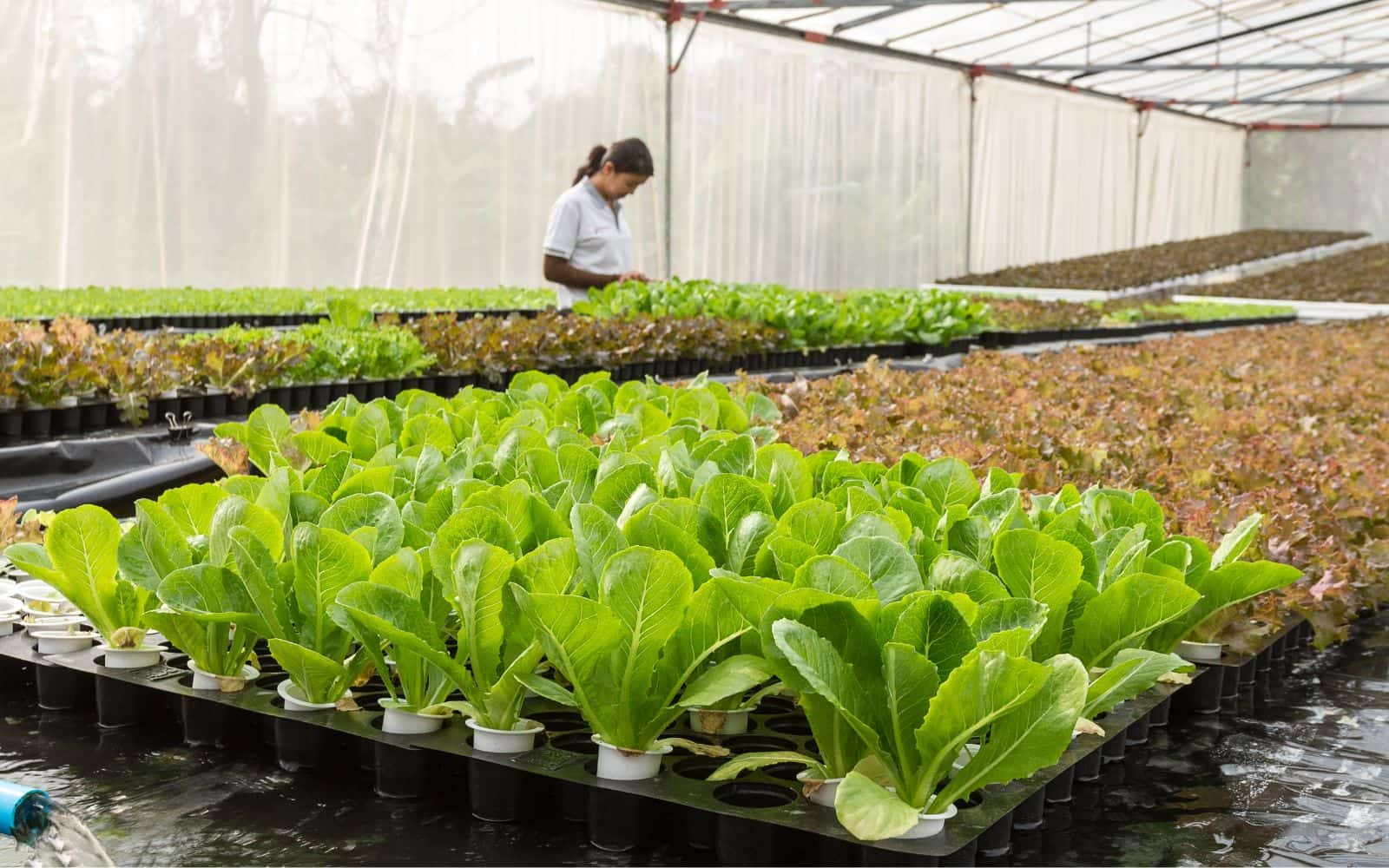
How to transplant lettuce seedlings?
If you’re planting outdoors, the seedlings are ready to transplant when they have four or five leaves. You should keep them moist while preparing for transplants as it prevents them from wilting. Also, keep the seedlings in the shade and try to minimize disturbing the roots.
Fortunately, lettuce grows quickly. You can mix it with other vegetables that allow you to sow and harvest them long before slow-growing vegetables are mature.
When you’re transplanting lettuce seedlings, plant them so that the leaves’ base is just a few inches above the soil level. You shouldn’t plant it too deep otherwise, the roots may rot.
To protect it from insects and birds, you may place a floating mulch made of loose covering of fabrics. It’s also helpful in protecting against frost.
How to protect lettuce from pests and diseases?
Slugs and snails are the most common insects that may damage the lettuce. These insects may eat young lettuce leaves and burrow into the lettuce hearts. This is why you should wash your lettuce carefully before eating.
Aphids (either black fly or greenfly) can be a problem, and there are several ways to control outer leaves of lettuce from getting infected. The cutworms, wireworms, and leather jackets sometimes attack the lettuce roots. Read more about getting rid of Aphids here.
The most severe attack on lettuce comes from root aphids. They feed on roots and cause the affected lettuce to wilt. You can identify that lettuce is infected by looking at the soil closely. If root aphids are present, you may find a waxy white powdery substance in the ground.
If you’re growing lettuce in a wet weather condition, the downy mildew might be a problem. The most common is the Botrytis, a gray mold fungal rot that can damage leaves or even destroy whole plants.
The infections to lettuce are at their peak in the wet summer. You may often find fluffy gray, off-white, or gray-brown mold appearing on leaves during this season. The spores are spread in the air or by rain or water splash.
As a preventative measure, you should remove and destroy affected parts of the plant and make sure the remaining plants have space for air to circulate freely.
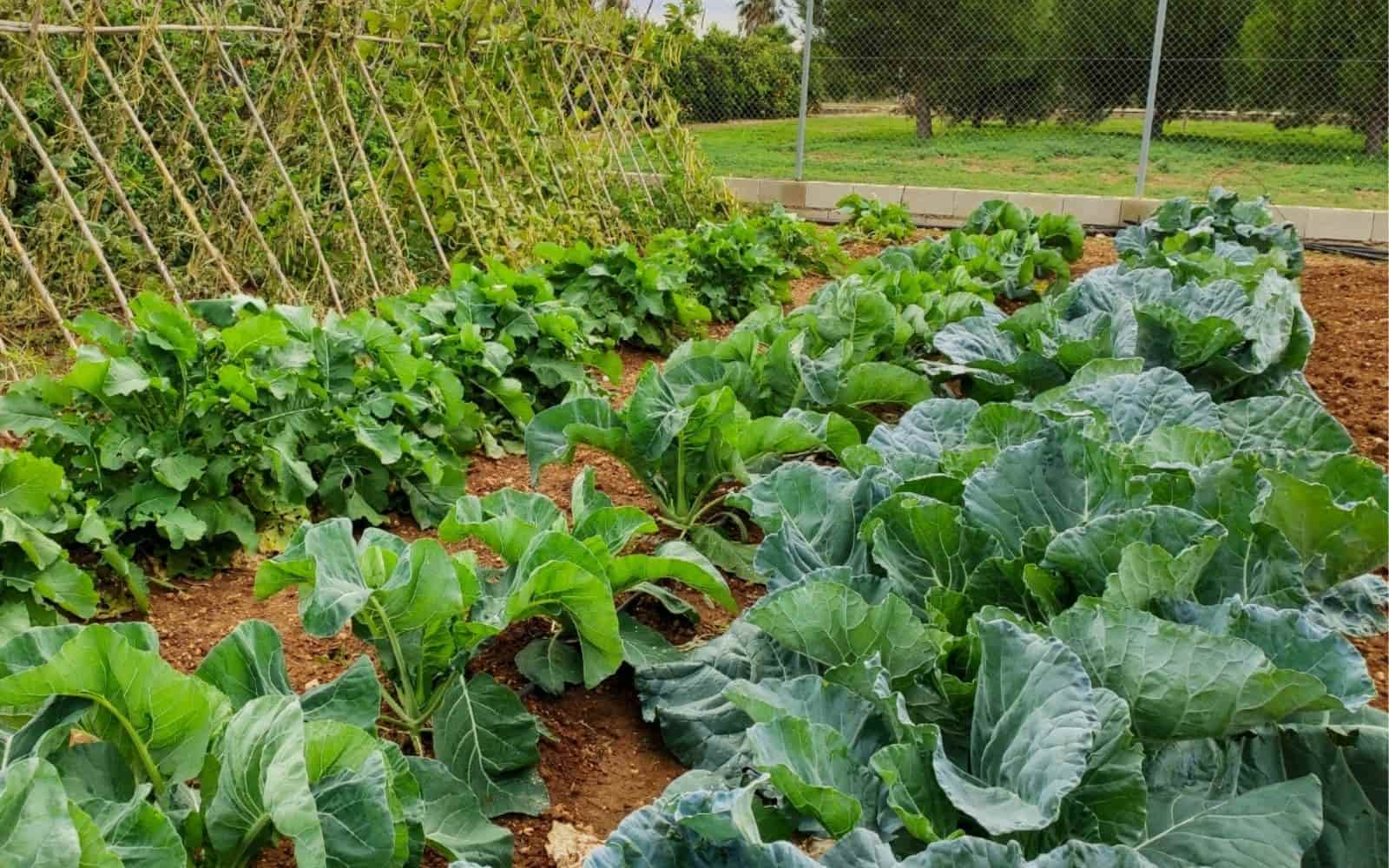
How to harvest and store lettuce?
Popular lettuce varieties such as Butter, Romaine, and Head lettuce all take longer from sowing to harvesting than loose-leaf lettuce. The main reason is that they need additional time to develop hearts.
But the good thing is that, once the hearts are mature, you can pick them before they have a chance to bolt in hot weather or get rotten in wet weather.
You can harvest loose leaf lettuce whole or as a cut-and-come-again crop. This gives you a steady supply of either fully grown or baby leaves throughout the growing season.
When you’re harvesting loose-leaf lettuce, you can cut off the whole young lettuce about 1 inch above the soil’s surface. Within a few weeks, new leaves will have re-sprouted from the stump left behind in the ground.
You may be able to get a second or third harvest from a single stump. The regular crop of outdoor leaf lettuce can happen from May to October. You can get started harvesting at the beginning of June and continue until the first frost.
After harvesting, you can store lettuce by wrapping it in a wet cloth or damp paper towel. Ensure the towel isn’t drenched in water and place the lettuce head inside a plastic bag. You can store the packed lettuce in a refrigerator.
Harvesting Tips:
- You will know that lettuce is ready for cutting when a firm heart has formed. You can test it by pressing the top of the plant gently with the back of your hand. Don’t squeeze the heart as it will damage the lettuce.
- If you leave it at this stage, the heart will begin the upward. It’s a sign that it’s getting ready to bolt. You can then cut it for use or throw it away.
- When planted outdoor, it’s preferred to cut in the morning when the heads have dew on them. You should pull the whole plant and cut off the root and lower leaves. You can also use the unwanted leaves for compost.
How long does lettuce last?
It all depends on the lettuce type and the way you have stored it. Head lettuce can last 1 to 3 weeks, whereas loose-leaf lettuce can last up to 10 days. Most other types of lettuce can last anywhere from 2 to 7 days in stable environments.
Compared to other vegetables, lettuce lasts longer. You can improve the freshness of lettuce by cutting and storing it in a sealed container.
But always pay attention to the overall texture of lettuce. If it appears to be wilting and generating a foul smell, it may be time to throw it out.
How to keep lettuce fresh?
Lettuce and other vegetables lose their freshness depending on their storage condition. The leading cause of lettuce and other vegetables losing their freshness is the generation of ethylene gas. This is produced as organic materials such as vegetables start to decay.
You can improve the freshness of the outer leaves of lettuce by reducing the ethylene gas exposure to lettuce. You can reduce the external ethylene gas exposure by carefully sealing the lettuce in a plastic bag or container.
Most airtight containers are a great option to keep lettuce and other vegetables fresh for an extended period. A straightforward strategy is to tear the lettuce then place it in a zip lock bag with a small paper towel at the bottom.
You can then press the bag to remove any inside air and create a vacuum-sealed condition. It reduces the exposure of air to the lettuce inside the bag. You can then store it in the refrigerator to last 3 to 4 weeks without losing much freshness.
You need to maintain the right balance of moisture and air when the lettuce is ready to use. You can take it out from the sealed bag and place it in perforated bins to allow the proper airflow around the lettuce. It helps maintain the freshness of lettuce and feel crisp when eating.
How to wash lettuce?
If you’re in a rush, you can place the leaves under the running water for 2 to 3 minutes and rub it gently to remove any dirt and debris. But if you want to wash it properly, get a large bowl or fill water in the clean sink.
Add lettuce in the bowl or sink and swish them around to clean it. You will see the debris remain at the bottom while you wash the lettuce. After you have thoroughly cleaned the lettuce, you can remove the lettuce and dry it in a kitchen towel or use a paper towel.
If you have a salad spinner, you can use it to dry it quickly. You should pack it if you’re not going to use it right away. This will ensure that lettuce leaves remain fresh to consume.
How to regrow lettuce?
Lettuce is one of those plants that are easy to grow. Here are the steps to regrow lettuce.
Step 1: Cut excess lettuce leaves and use it in a salad while leaving the 1 to 2 inches of lettuce stem.
Step 2: Place the stem in an inch of water. Lettuce stem remains in the water while the rest of the part remains outside in the air.
Step 3: Let it sit there for 10 to 12 days.
Step 4: A new leaf shoot will emerge from the middle of the stem you can use in a salad.
Conclusion
Lettuce is one of the easiest crops for salad greens to grow both indoors and outdoors. You can grow it in raised garden beds and container gardening. It’s also ideal for spring and autumn harvesting.
There are different types of lettuce that you can grow. It’s a quick way to save money on grocery bills and have a consistent homegrown lettuce supply.
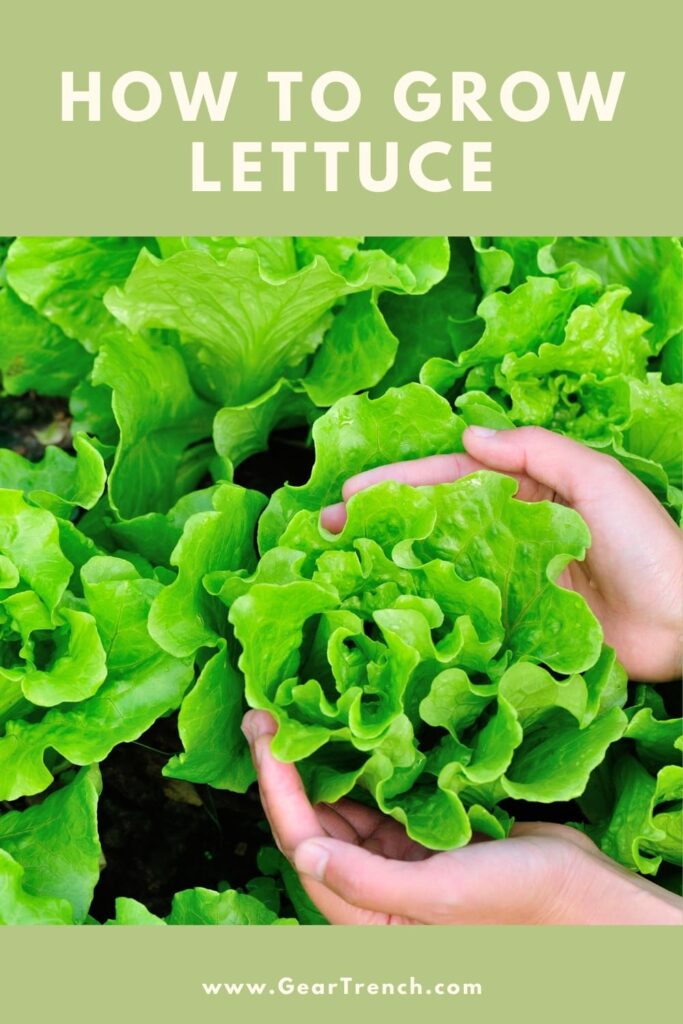
Don’t forget to share this post


